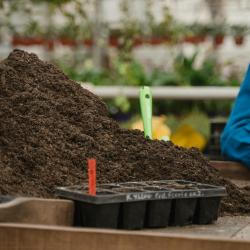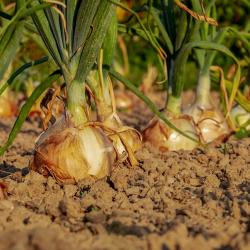How to Plan a Year-Round Vegetable Garden
Gardening is a rewarding endeavor that brings fresh produce to your table and a sense of accomplishment to your spirit. With a bit of planning, you can enjoy a bountiful harvest every season by creating a year-round vegetable garden. This guide will walk you through the essential steps to ensure your garden thrives throughout the year.
1. Assess Your Climate and Hardiness Zone
Understanding your local climate and the USDA Hardiness Zone is crucial for selecting appropriate crops and planning planting schedules. These zones indicate the average minimum winter temperature, which helps identify which plants can survive and thrive in your area. Consider microclimates within your garden that might influence plant growth, such as shaded areas or spots protected from wind.
2. Make a Garden Plan
Sketch a layout of your garden, considering the amount of sunlight, soil conditions, and space available. Plan for crop rotation to improve soil health and prevent pest and disease build-up. Group plants with similar water, sun, and nutrient needs together for efficient maintenance. Divide the garden into sections for spring, summer, fall, and winter crops, ensuring that each season's plants have optimal conditions for growth.
3. Choose the Right Vegetables
Select a diverse range of vegetables that are suitable for each season. For spring, consider peas, radishes, and lettuce. Summer is ideal for tomatoes, cucumbers, and peppers. Autumn favorites include carrots, kale, and broccoli, while winter can support hardier crops like garlic, leeks, and winter greens. Consider the growth habits of each plant; for instance, tall plants can provide shade for others that benefit from cooler conditions.
4. Start with Quality Soil
Healthy soil is the foundation of a thriving garden. Test your soil for nutrient content and pH levels, and amend it as necessary with organic matter such as compost or well-rotted manure. Good drainage is essential, so consider raised beds or adding sand to heavy clay soils. Mulching helps retain moisture and suppress weeds, contributing to a healthier garden ecosystem.
5. Implement Succession Planting
To maximize productivity, practice succession planting. This involves planting a new crop immediately after one is harvested, ensuring continuous production. For example, after harvesting early spring greens, you can plant summer crops like beans or squash. Keep a calendar to track planting and harvesting times, allowing you to plan for successive sowings.
6. Extend the Growing Season
Use techniques to extend your growing season, such as cold frames, row covers, or greenhouses. These help protect plants from frost and can provide a head start in spring or prolong the harvest into late fall and winter. Consider starting seeds indoors to get a jump on the growing season, transferring seedlings to the garden when conditions are favorable.
7. Practice Integrated Pest Management (IPM)
Maintain a balanced ecosystem by encouraging beneficial insects, such as ladybugs and lacewings, which help control pests naturally. Rotate crops annually to prevent pest infestations and plant disease. Use companion planting strategies to naturally deter pests, such as planting marigolds alongside tomatoes to repel nematodes.
8. Keep Records
Documenting your gardening activities helps refine your approach each year. Keep records of planting dates, crop varieties, yields, and any issues encountered. Review these notes annually to make informed decisions about what to plant and where to adjust your strategies for better results.
Conclusion
Planning a year-round vegetable garden requires foresight and dedication, but the rewards are well worth the effort. By understanding your local climate, selecting the right crops, and employing smart gardening techniques, you can enjoy fresh, home-grown produce throughout the year. Embrace the process, learn from each season, and watch your garden flourish as you become more attuned to its rhythms. Happy gardening!






















